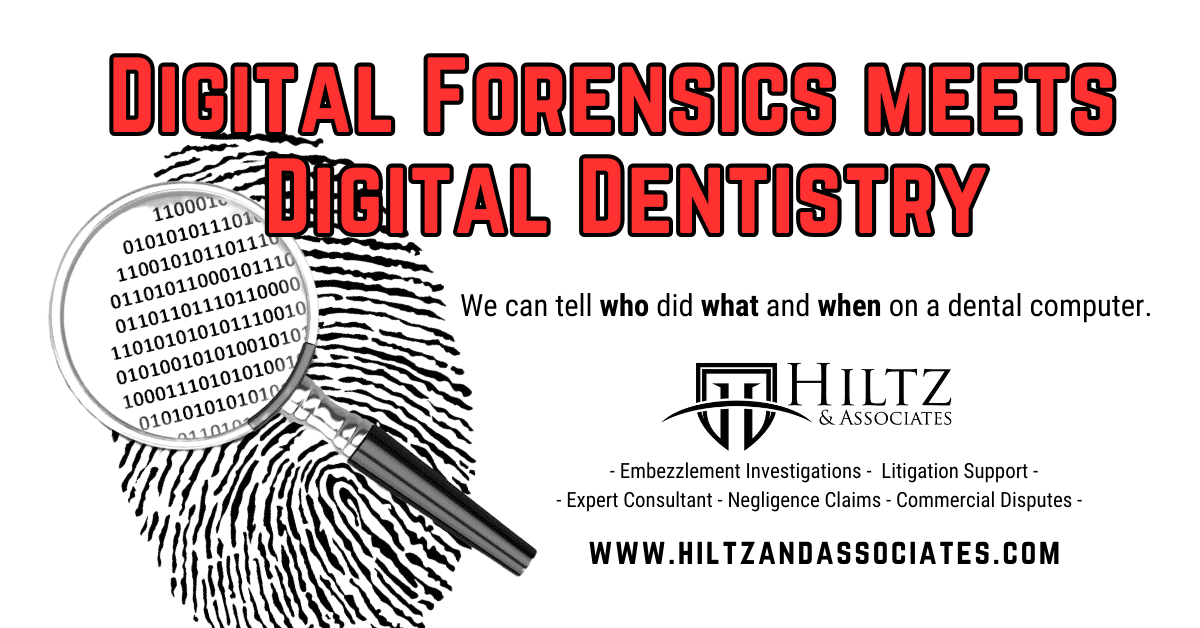WHAT YOU SHOULD – AND SHOULD NOT – DO WHEN FIRST FACED WITH A NEGLIGENCE LAWSUIT.
Posted:
Last Updated:
| THE ELECTRONIC DENTAL RECORD HAS VIRTUALLY REPLACED PAPER CHARTS. |
IT’S A FACT. Most dentists will face at least one lawsuit during their career with the majority of those lawsuits claiming negligence in the delivery of patient care.
When first presented with a negligence claim, many dentists will feel it is in their best interest to change or amend their electronic dental records.
Most are well-intentioned and make entries to ‘enhance’ or ‘extend’ the clinical documentation related to a specific patient or encounter.
Others may panic and enter fictitious information in an attempt to mislead or conceal past events and encounters.
Both are terrible choices.
Unlike paper charts, where record alterations can be difficult to detect, electronic dental records leave behind ‘digital footprints’ called metadata.
Metadata, like other data that exists in electronic form, is discoverable and there are three basic types that can be used as evidence in court.
System Metadata: information that is automatically generated by a computer which includes “user, date, time of creation, and the date a document was modified.”
Substantive Metadata: data which shows changes to a document made by a user. (e.g. tracked changes, audit logs)
Embedded Metadata: data attached to a document or file that is not normally visible. (e.g. the author of a document and total editing time)
Do not disregard the existence of metadata and do not make changes to electronic records after you have been served with a claim.
Instead, do this:
WHEN FIRST CONFRONTED WITH A NEGLIGENCE CLAIM, HERE IS WHAT I RECOMMEND YOU DO.
#1: Ask your IT company to provide you with a certified copy of a recent data backup, taken prior to when you became aware of the claim (e.g. yesterday’s backup). This is vital, as it can preserve both data and metadata in the state it was in prior to when the claim was served.
#2: Immediately notify your insurance company and speak with a malpractice attorney.
#3: Do not, under any circumstance, make changes or additions to previously recorded electronic dental records without legal advice.
#4: Advise your attorney that in the event it is needed, you can produce a certified data backup that predates the statement of claim. (#1 above).
If you have questions, or need help in implementing any of the suggestions in this article, contact me for assistance.


